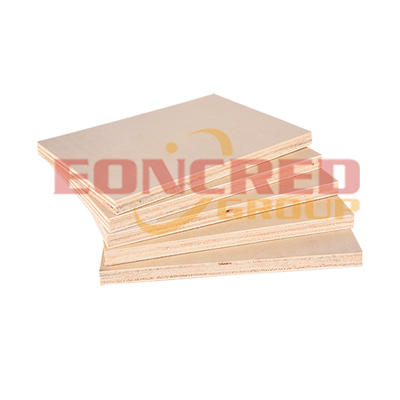Eoncredgroup – The rapid growth of China’s economy, the influx of wood, and the continuous replenishment of high-quality broad-leaved wood from abroad have prompted the rapid development of the Chinese plywood industry. At present, China is not only a big exporter of plywood, but also the world’s largest producer of plywood. Plywood is also divided into commercial plywood, marine plywood and the like. Do you know where they are used?

you will know:
- what is commercial plywood?
- Classification of commercial plywood
- Advantages of using commercial plywood
- Application
what is commercial plywood?
Plywood is a material manufactured from thin layers or “plies” of wood veneer that are glued together with adjacent layers having their wood grain rotated up to 90 degrees to one another. It is an engineered wood from the family of manufactured boards which includes medium-density fibreboard (MDF) and laminated particle board (chipboard).
It generally refers to the grade of plywood, usually referred to as MR grade plywood (IS 303), which is basically the cheapest grade plywood on the market. So you can find in the Indian market that people want commercial or commercial grade plywood, which usually means they want cheap Mr. (moisture-proof / IS 303) grade plywood. These plywoods are usually made up of a combination of softwood and hardwood or just cork.
Although commercial plywood is made from different plywood, the basic properties of commercial plywood remain the same. The internal materials are the same. The only difference is its manufacturing process or processing method (which varies according to each manufacturing unit), followed by the adhesive used to bond the plywood. Urea-formaldehyde is commonly used as a binder to bond plywood.
Classification of commercial plywood
In order to enable users to use commercial plywood of suitable quality and price, commercial plywood is further divided into:
Class I (NQF) – weather resistant, boiling water resistant plywood. These plywoods are durable, resistant to boiling or steam, and can be used outdoors.
Class II (NS) – Water resistant plywood. It can withstand cold water or short-term hot water impregnation, but is not resistant to boiling.
Class III (NC) – moisture resistant plywood. It has a certain moisture resistance and is suitable for indoor use.
Class IV (NBC) – not resistant to plywood.
Advantages of using commercial plywood
The interior design mainly uses commercial plywood. Low cost and large output. The required design can be easily achieved because of its flexibility and wear resistance. These cuts give an attractive design. Bookshelves, furniture, and chandeliers are applications that are extracted from commercial plywood. Interior designers have adapted the home decor of commercial plywood as they offer a range. Commercial plywood is a huge alternative to traditional interior design elements such as cement, tiles, metal, synthetic paints and many other materials. They are also cost effective compared to similar products without compromising quality. Due to their high durability and tensile strength, interior designers have lost taboos when seeking artistic conversion and creative structures.
Application
Commercial plywood is the most commonly used interior plywood, that is, used in homes and offices. Commercial plywood is best used in dry rooms such as living rooms, offices, offices, etc. It is most commonly used to make furniture, wall panels, partitions, etc. However, for the site, contact with water is expected and it is best to use waterproof plywood, that is, the BWR brand.



